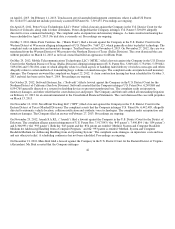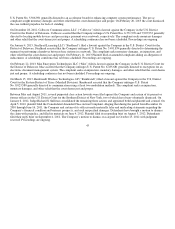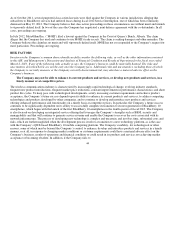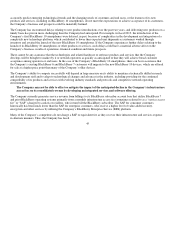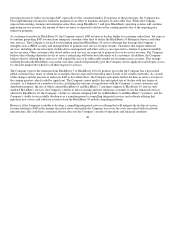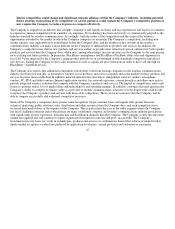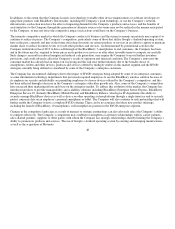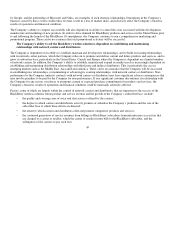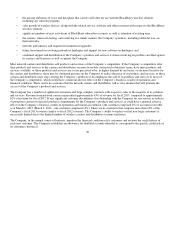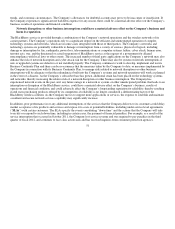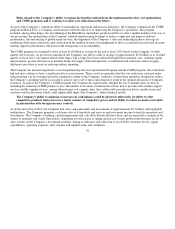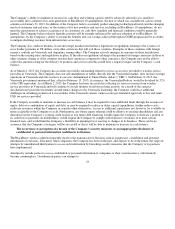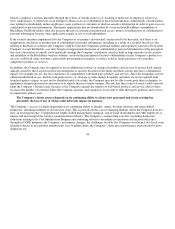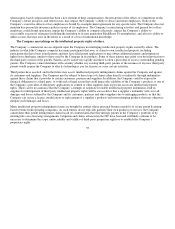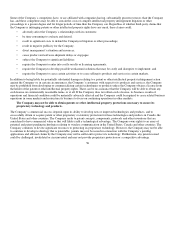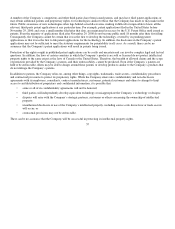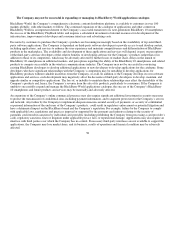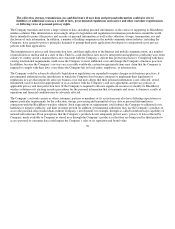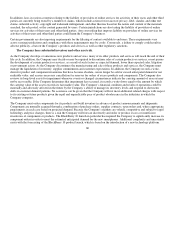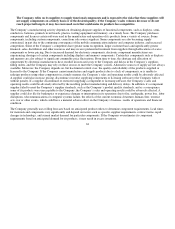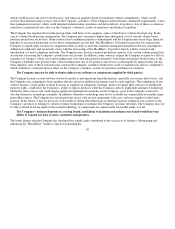Blackberry 2013 Annual Report Download - page 59
Download and view the complete annual report
Please find page 59 of the 2013 Blackberry annual report below. You can navigate through the pages in the report by either clicking on the pages listed below, or by using the keyword search tool below to find specific information within the annual report.
Risks related to the Compan
y
’s ability to sustain the benefits realized from the implementation of its cost optimization
and CORE programs and to continue to realize cost reductions in the future.
As part of the Company’s continuous effort to streamline its operations and increase efficiency, the Company commenced the CORE
program in March 2012, a Company-wide initiative with the objective of improving the Company’s operations. The program
included, among other things, the streamlining of the BlackBerry smartphone product portfolio to offer a smaller number of devices at
any given time, the optimization of the Company’s global manufacturing footprint to reduce complexity and improve delivery
performance, the outsourcing of global repair services, the alignment of the Company’s sales and marketing teams to leverage its
marketing efforts more effectively and a reduction in the number of layers of management to drive accelerated execution and decision
making, improve performance and increase the transparency of accountability.
The CORE program was targeted to drive at least $1.0 billion in savings by the end of fiscal 2013 based on the Company’s fourth
quarter 2012 run rate. As previously announced, the Company was able to achieve savings of approximately $1.0 billion as of its third
quarter of fiscal 2013, one quarter ahead of the target. The savings have been realized through lower material costs, working capital
improvements, greater efficiencies in manufacturing and supply chain management, overall headcount reductions and leveraging
third-party providers to assist in reducing indirect spending.
The Company has incurred significant costs in implementing the Cost Optimization Program and the CORE program, all of which has
had and may continue to have a significant effect on net income. There can be no guarantee that the cost reductions achieved under
either program can be sustained given the competitive nature of the Company’s industry, or that future initiatives designed to reduce
the Company’s spending will be successful or achieve any or all of the results desired or result in the optimal allocation of Company
resources. As part of the Company’s CORE program, the Company has significantly changed the way it manufactures its devices,
including the reduction of EMS partners it uses, the number of locations it manufactures from, how it provides after-market support
services and the suppliers it uses, among other charges to its supply chain, that could result in production delays, quality issues and
customer satisfaction issues which could significantly impact the Company’s future financial results.
The Company’s ability to maintain or increase its cash balance could be adversely affected by its ability to offer
competitive products and services in a timely manner at competitive prices and its ability to collect accounts receivables
in jurisdictions with foreign currency controls.
As of the end of fiscal 2013, the Company had cash, cash equivalents and investments of approximately $2.9 billion with negligible
indebtedness. The Company generates cash from sales of its products and services and investment income to fund its operations and
investments. The Company’s working capital requirements and cash flows historically have been, and are expected to continue to be,
subject to quarterly and yearly fluctuations, depending on such factors as timing and success of new product introductions, levels of
sales, returns on the Company’s investment portfolio, timing of deliveries and collection of receivables, inventory levels, capital
expenditures, operating expenses, and customer and supplier terms and conditions.
52


